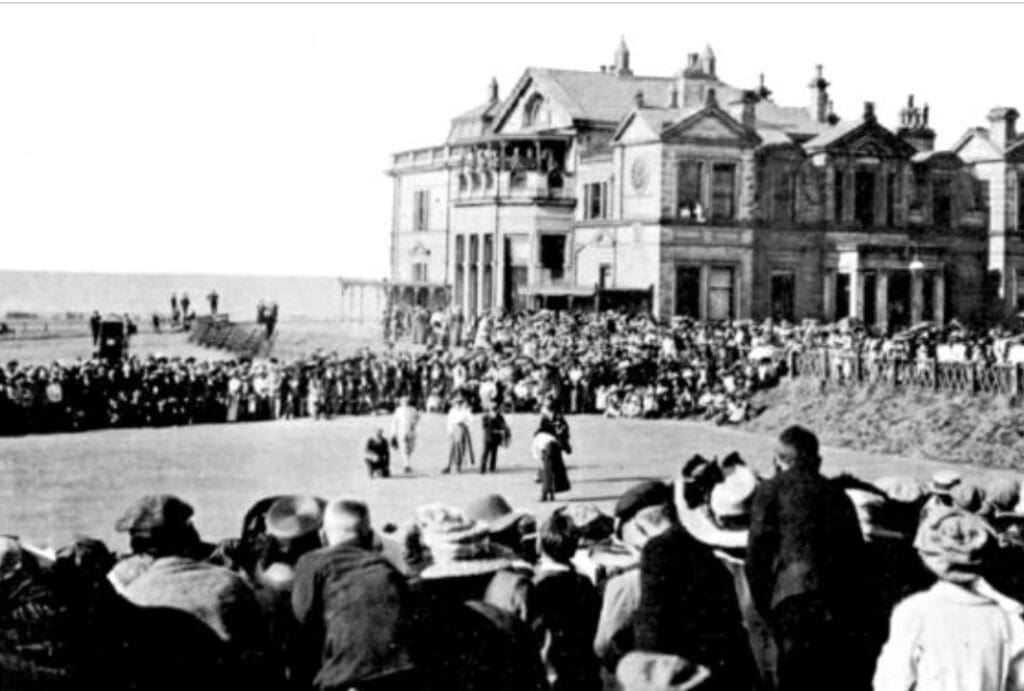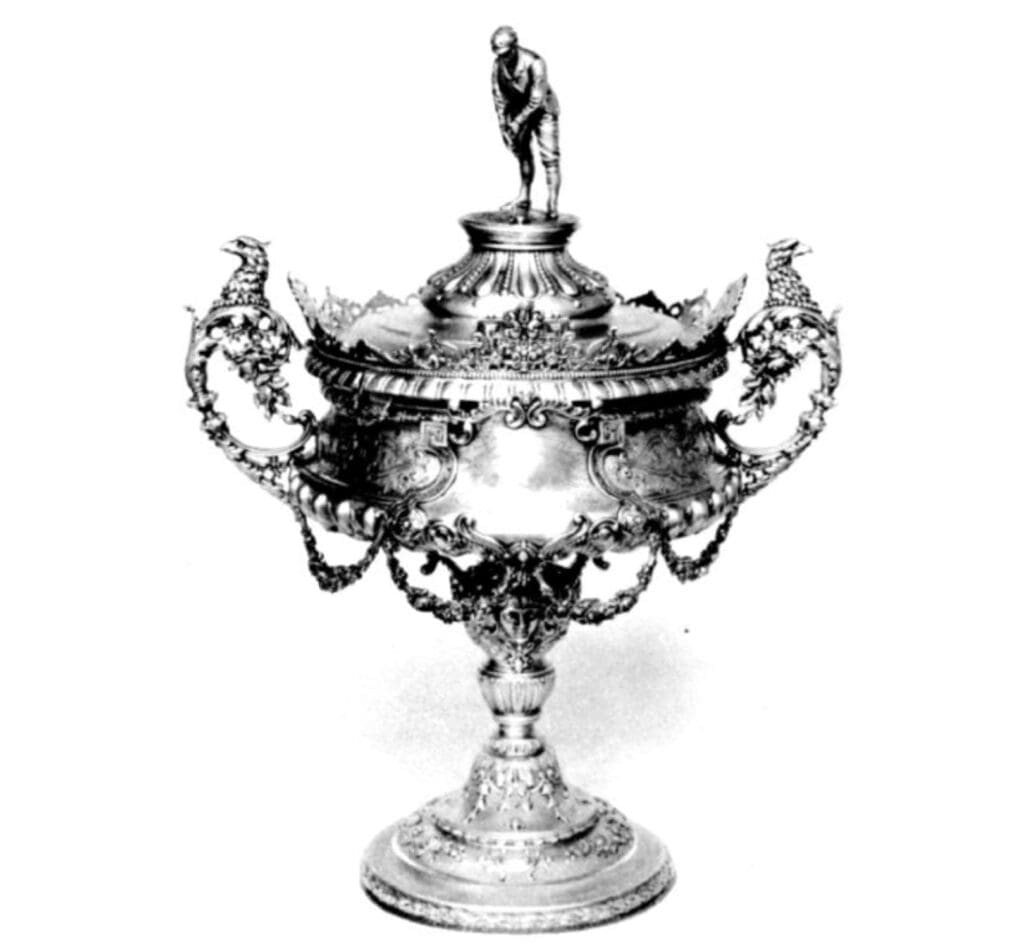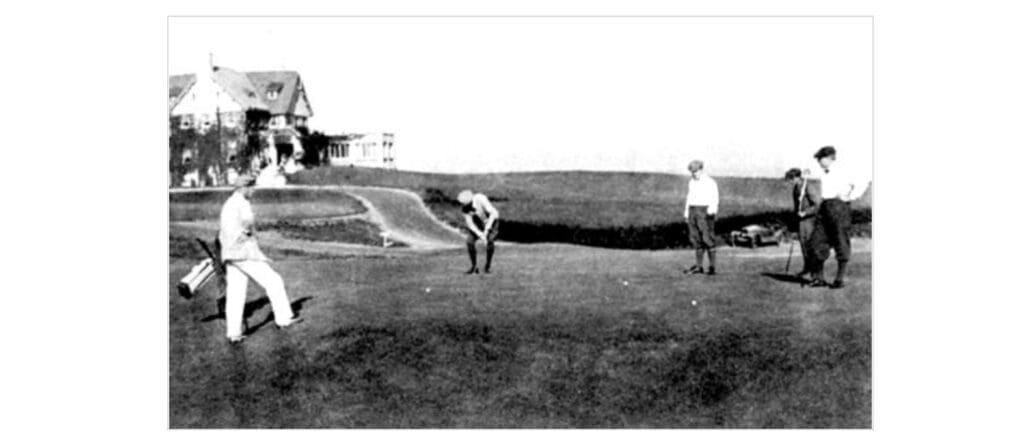Charles Macdonald is referred to by some as he father of American golf. Many people today have probably never heard of him as he passed away back in 1939. Charles Macdonald was born in 1855 in Niagara Falls, Canada. As a teenager, he grew up in Chicago never playing the game as a kid. When he was just 16 years old, his father decided he should leave Chicago and go visit his grandfather in the town of Saint Andrews, Scotland to pursue an education at the local university.
He was put in the care of a family friend, and made his way east eventually crossing the Atlantic on a side-wheel steamer. The voyage took nine days with the pair landing in southern Ireland. They did a little sight seeing including a trip to Blarney Castle where Charles Macdonald admits he kissed the Blarney Stone. In his book, Scotland’s Gift, Golf, Macdonald attributes his gift of praise to others to that kiss of the stone.
The pair eventually made their way into Scotland and took a train to the quaint town of Saint Andrews. Charles Macdonald talks about his train ride into town for the first time. He said the train went right past the old course in those days. He talked of another gentleman on the train telling him the story of a local famous player holding the course record at the time by shooting a “low” and long standing round of 95.
It wasn’t long until he found himself on the grounds of The Old Course and becoming enthralled with the game of golf. The game had a long rich Scottish history in this area. He learned stories of the game going back hundreds of years. He learned that in the late 16th century, the game of golf came under attack by both the church and government. Laws were actually passed forbidding golf on Sundays. Yet the game persevered. As Charles Macdonald said “neither clergy nor government could stamp out a game so dear to the Scottish heart and fitted to the Scottish character.”

As a new student of the game, Macdonald was taken by his grandfather to none other than old Tom Morris from whom he bought three or four of his first golf clubs. With not much else to do in the town and those long summer days, he played a lot of golf.
During this time in Scotland, the game of golf was formalizing with games and tournaments starting up. In 1874, Macdonald began to gain some recognition as a fine player by breaking 90 on a regular basis and winning various Royal and Ancient medals. It’s important to mention that the equipment of the day and the course conditioning played a role in scoring. The ball didn’t go as far as these days and the conditioning was rough by today’s standards. He played with some of the greatest golfers of the time including young Tom Morris. He left Saint Andrews proclaiming golf to be the best of outdoor sports and admitting that he shed tears leaving the area on his way back to Chicago.
While the game of golf was continuing to rise in Scotland as well as formalizing with the Royal and Ancient, it was still virtually unknown and unstructured in the United States. As a matter of fact, Charles Macdonald called the years of 1875 to 1892 the dark ages for the game of golf in America. The great fire of Chicago was in 1871 and it devastated the city. Additionally the panic of 1873 reversed a lot of finances for many. During this time, Charles Macdonald said he attempted to play golf only once. He and a friend went out to some vacant land and put three or four empty cans left by soldiers in the ground. They made holes long enough to drive and approach.
In 1894, golf was still a still a rare sight and in a sad state. Americans had no idea what the game was or what these strange clubs were that people walked around with in a bag. Some thought they were for polo. There is a story of a man returning from abroad with his golf clubs only to have them impounded for months as they were thought to be some kind of weapons. However, there was a growing kinship among the few players and the beginning of a movement to build real golf courses.
In the late 1800’s, Charles Macdonald moved to the New York area for business interests and was playing golf in an apple orchard that was called a golf course. At the time, people were playing in a cow pastures in Chicago. In Boston, people were playing seven holes hitting over piles of trees, bushes and greenhouses. However, just like in Scotland where the love for the game could not be quelled, Americans were loving the game despite its rudimentary layouts.

Throughout those late 1800’s, more formal courses were being built and clubs were being established. In 1881, in White Sulphur Springs, WV, a few holes were laid out which would eventually become the Greenbrier. Shinnecock Hills Golf Club was formed in 1891 making it the first incorporated golf club in the United States.
During this time and due to his knowledge of the game of golf, Charles Macdonald was being approached to assist in building golf courses. In 1892, at Lake Forest, he laid out seven holes for a friend with holes ranging from 250 yards down to 50 yards. Later, thirty players gave ten dollars each to fund a course near Chicago. Nine holes were created on a farm. Due to its success, the course was later extended to 18 holes and chartered as the Chicago Golf Club in 1893.
Golf was taking off in the United States, but there was no central professional organization like the Royal and Ancients in Scotland. In 1894, five golf clubs came together to form a central association. As a representative of the Chicago Golf Club, Macdonald was involved in its founding. Technically, it was called the Amateur Golf Association of the United States. This was the organization that later became the United States Golf Association (USGA). Charles Macdonald was a part of developing rules for the game of golf, defining amateur status, and navigating the new world of golf politics.
During all this time, Charles Macdonald remained a golfer and was also honing himself into quite a good player. He played in club events and matches with good success. In 1895, the future USGA held its first US Amateur tournament over three days at Newport. There was no qualifying round and the tournament was conducted fully as a match play event. Charles Macdonald won the final match 12&11 to win the first US Amateur title. Looking back, this would be his highest achievement as a player. He would continue to play, but his path would start to lead toward golf course architecture.

In the early 1900’s, Charles set his sights on designing his greatest masterpiece as he came up with the idea of designing the National Golf Links. His research took him abroad to the United Kingdom where he spent time going to the greatest courses and studying they best holes. He came back with a list of what he deemed the best holes as well as notes and sketches. With this arsenal, he went back to New York. The idea was floated to ask sixty men to come up with $1,000 each to buy the land and build this perfect course of best holes. He got his sixty volunteers and off he went. First acquiring 205 acres of what was deemed worthless land at that time. On that land, he built both holes based on the greatest holes in Europe and some new designs. The National Golf Links opened in 1909 and played to 6,100 at the time. It was years of research and arguably Macdonald’s greatest design. This design opened many doors as there was a demand to build new golf courses all over the United States. He took on more projects partnering up with future famous golf course architect Seth Raynor.

Macdonald would team up with Seth Raynor and go one to design such other great courses as the Old White Course at greenbrier, Mid Ocean Club and Yale Golf Club. Macdonald would end up passing at the age of 83 in the year 1939. He was most recently inducted into the Golf hall of Fame in 2007 due to his many contributions to the game of golf.
This blog was written after reading his previously mentioned book, Scotland’s Gift, Golf. It’s a book with amazing detail into the life of a man who discovered his passion for the game of golf in Saint Andrews as a teenager and spent his life playing and contributing to the game and possibly laying claim to the title of father of American golf.
